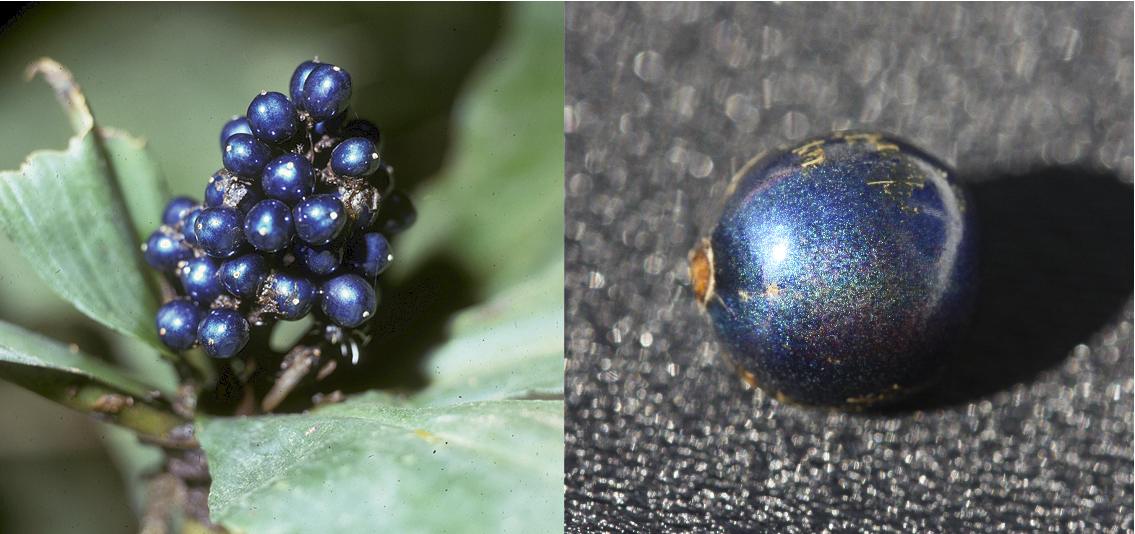Affiliations
Classifications:
Departments and institutes:
EPSRC Centre for Doctoral Training in Sensor Technologies and Applications in an Uncertain World
Colour in nature is everywhere: animals and plants develop structures on sub-micrometer scale to manipulate light and to obtain brilliant and iridescent colours. This kind of colouration, named structural since it is not obtained using pigmentation, results from various mechanisms, including multilayered materials, crystalline inclusions and surface diffraction gratings. Pollia condensata fruits are one of the most striking examples of strong iridescent colouration in plants. The colour is caused by Bragg-reflection of helicoidally stacked cellulose microfibrils, which form multilayers in the cell walls of the epicarp. The bright blue colour of this fruit is more intense than that of many previously described biological materials. Uniquely in nature, the reflected colour differs from cell to cell, as the layer thicknesses in the multilayer stack vary, giving the fruit a striking pixelated or ’pointillist’ appearance.

PNAS 109, 15712–15715, (2012)
Another striking example is the white of the Cyphochilus beetle which is native to South-East Asia, is whiter than paper, thanks to ultra-thin scales which cover its body. A new investigation of the optical properties of these scales has shown that they are able to scatter light more efficiently than any other biological tissue known, which is how they are able to achieve such a bright whiteness.
Scientific Reports 4, 6075 doi:10.1038/srep06075 (2014)

Sensor CDT
Department of Chemical Engineering and Biotechnology
Philippa Fawcett Drive
Cambridge
CB3 0AS

© 2025 University of Cambridge